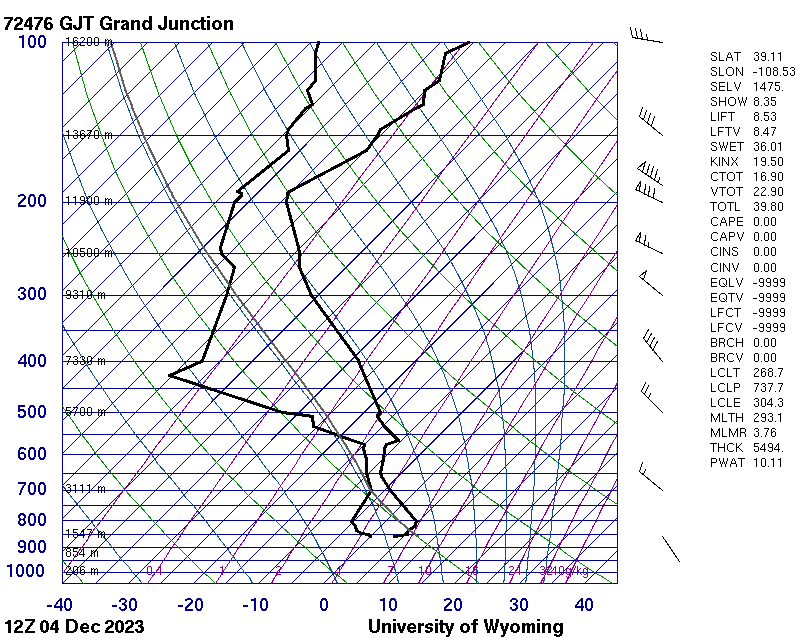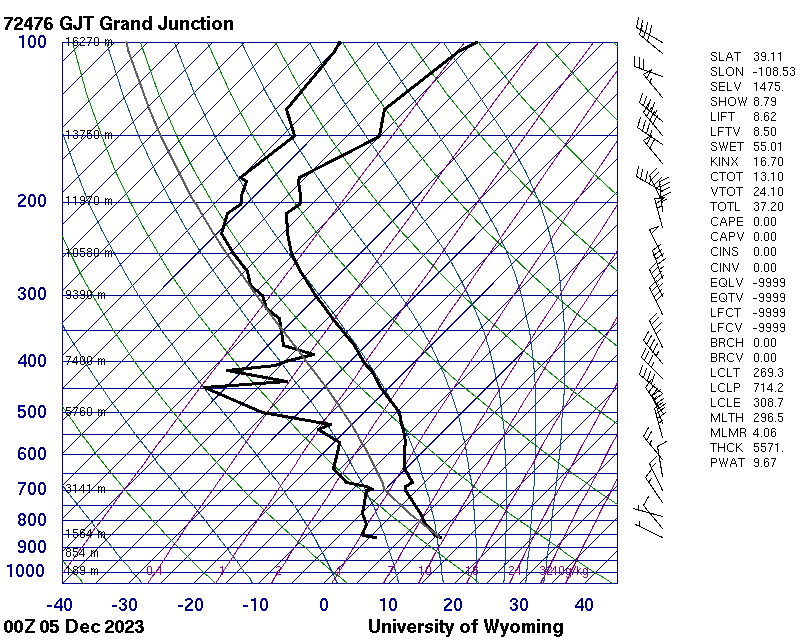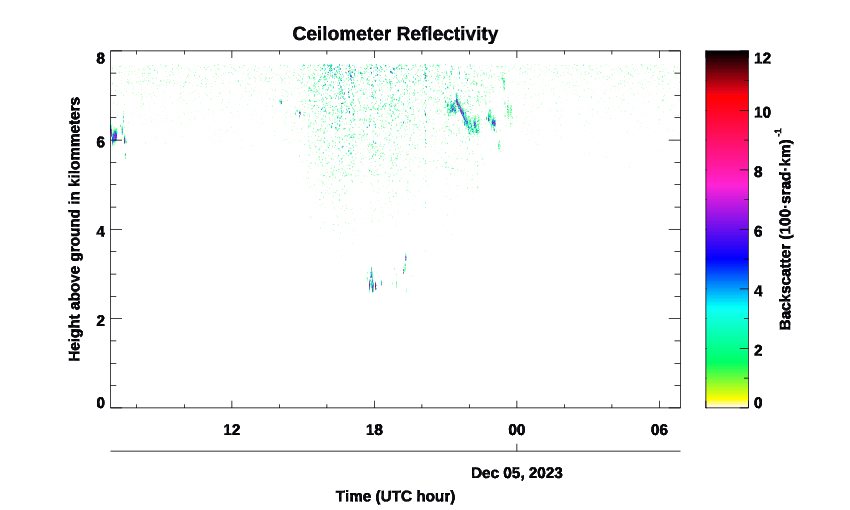For the Clouds Second, I wanted to capture the cloud formation over Boulder throughout daytime from dawn to dusk.
For this, I set up a spare phone constantly plugged into a charger and mounted it on a tripod facing 306deg North-West (54deg West of exact North) and at an angle of around 40deg pitch or elevation. I set the phone to click an image every 15.6 seconds to generate the hyperlapse video at 375x speed. Using this setup, I captured videos for 22 days and chose this one for the final upload. The camera was facing towards the mountains, with the mountain line being from the lower left corner to the center, below the frame. This results in some clouds forming on the bottom side which might be a result of the lift mechanism caused by the mountains. This video is captured on 4th December 2023 from around 5am to 5:30pm.
I liked the variety of clouds seen in the video. The wind speed was also high on this day as compared to the other videos, with the formation and dispersion of clouds being visible. Also, at multiple times in the video, it seems that there are clouds at different altitudes in the sky, two or three layers can be seen, each moving in a unique direction due to the different wind directions at different altitudes.
I also particularly liked the pinkish-reddish hue that comes up on the clouds for a few seconds just before sunset.
As mentioned earlier, the clouds in the video are quite varied, indicating a dynamic sky, along with clear areas of blue sky. This might suggest a mix of stable and potentially changing weather (which is seen by the snowfall in the next few days).
Overall in the video, Cirrus, Cirrocumulus, Altocumulus, Cumulus, Stratocumulus, and Altocumulus clouds are seen. However, the identification can be a bit inaccurate as a result of multiple clouds being seen on the screen at once which makes the identification a bit difficult. Also, some Contrails of jets can be seen throughout the video. Here are some timestamps and the names of the clouds seen in the video at that second:
- 23s – Cirrus
- 35s – Cirrocumulus
- 49s – Cirrus and Altocumulus (bottom grey clouds)
- 1min 7s – Cirrus, Cumulus, Altocumulus lenticularis, and a Contrail
- 1min 15s – Cumulus and Cirrus (forming Cirrus radiatus)
- 1min 18s – Cirrus undulatus, Cirrostratus, Altocumulus, and some Contrails
- 1min 22s – Cirrus and Altocumulus
Here are the Skew-T plots for 4th Dec ’23 6am and 6pm, as well as the Ceilometer plot from 6am Dec 4th to 6am Dec 5th.



Apparatus and Details:
- Samsung M31
- Tripod Mount
- Facing 306deg North-west
- ~40deg Pitch (elevation)
- Image capture interval ~15.6sec
- Image Resolution – 3840 x 2160
- Focus set at infinity
- Video playback rate – 375x
Music
- Ocean Tide – Jay Someday
References:
Atmospheric Soundings (uwyo.edu)
Skywatch Observatory (colorado.edu)
FlowVis Guidebook
Here is the report:

1 Comment. Leave new
This day-long time-lapse is really cool. I love that you can see all of the different types of clouds forming overhead. I especially like when the altocumulus form. The framing of this video with the trees draws you eyes to the center. This is a really compelling and effective video!